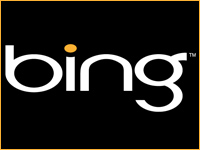
Microsoft has added new functionality to its Bing search engine. Visual Search, an add-on based on its Silverlight plug-in, made its debut Tuesday at the TechCrunch50 industry event being held in San Francisco.
Introduced as a beta, Visual Search will become available to users on a rolling basis over the month, with general availability expected by the end of September.
Visual Search allows users to use images instead of text to generate search results. A user can initiate a search for digital cameras, for example, by clicking on an image in the Visual Search gallery. That generates hundreds of camera images; the user can click on any one of them for further investigation or narrow the results using one-click filters — such as manufacturer, format or category — found to the left of the main screen.
It’s a new way to formulate and refine search queries through imagery, particularly for sets of results that tend to be more structured, Todd Schwartz explains in the company’s Bing blog. “We call these data groupings galleries.”
It’s a good feature for users who are more attuned to images, Ken Saunders, president of Search Engine Experts, told the E-Commerce Times.
“As the searcher refines the search, the images that don’t match what he is looking for disappear to be replaced with more relevant images,” he said.
The new feature, while not likely to deliver a huge boost to Bing’s market share, certainly could nudge its numbers a little as it competes with Google and other more established search engines, Saunders said.
However, there does need to be a compelling reason for a user to go the extra step of conducting a search via a plug-in, he noted.
The Silverlight Factor
That extra step is the one drawback to the feature, according to Dan Rayburn, principal analyst in Frost & Sullivan’s digital media practice.
“Some people don’t like Silverlight or just don’t want to be bothered,” he told the E-Commerce Times.
That — plus the fact that too little of the functionality is available to make a proper assessment at this point — has prompted Rayburn to reserve judgment until the full product rollout.
“All I have seen them do so far is make an announcement and show off their beta — there is little other information out there. That makes it impossible to judge how the feature will aid Bing in general,” he said.
Growing Bing
Bing will be at the heart of the Microsoft-Yahoo search advertising partnership, which is currently under regulatory review.
Although it claims a relatively small share of the market, every incremental advance it makes appears to be coming at the expense of its huge rivals.
Recent figures from comScore show Bing is slowly gaining. It ended July with an 8.9 percent share in the United States, up from 8.4 percent in the previous month. Microsoft’s search market share registered 8 percent before Bing was launched earlier this year.
Google, the giant to beat in this space, claimed a 64.7 percent share in July — down slightly from 65 percent the month before. Yahoo registered 19.3 percent in July, a .3 percent drop from June.




















































